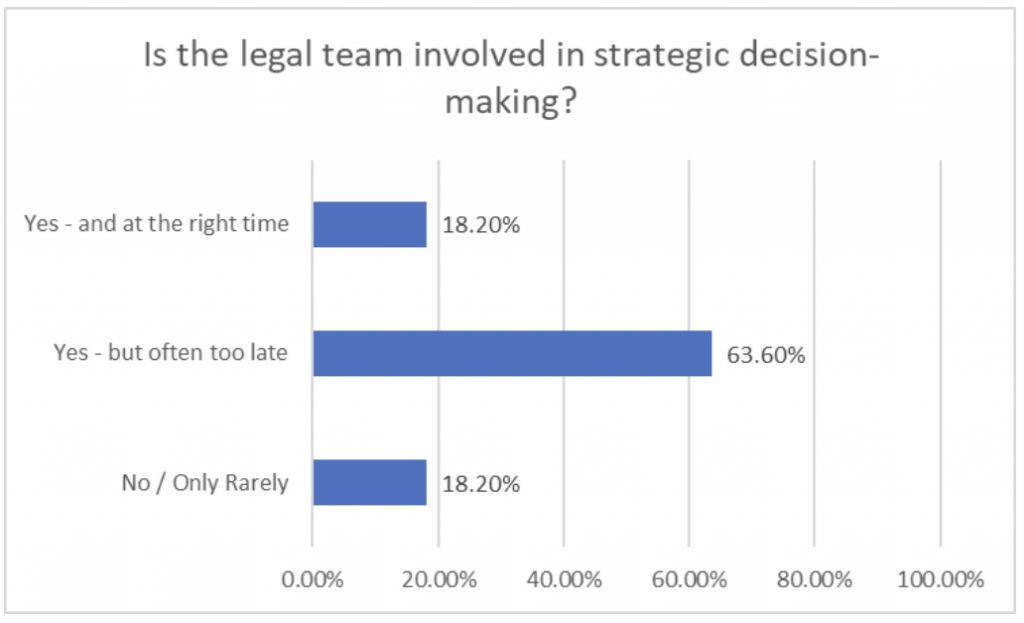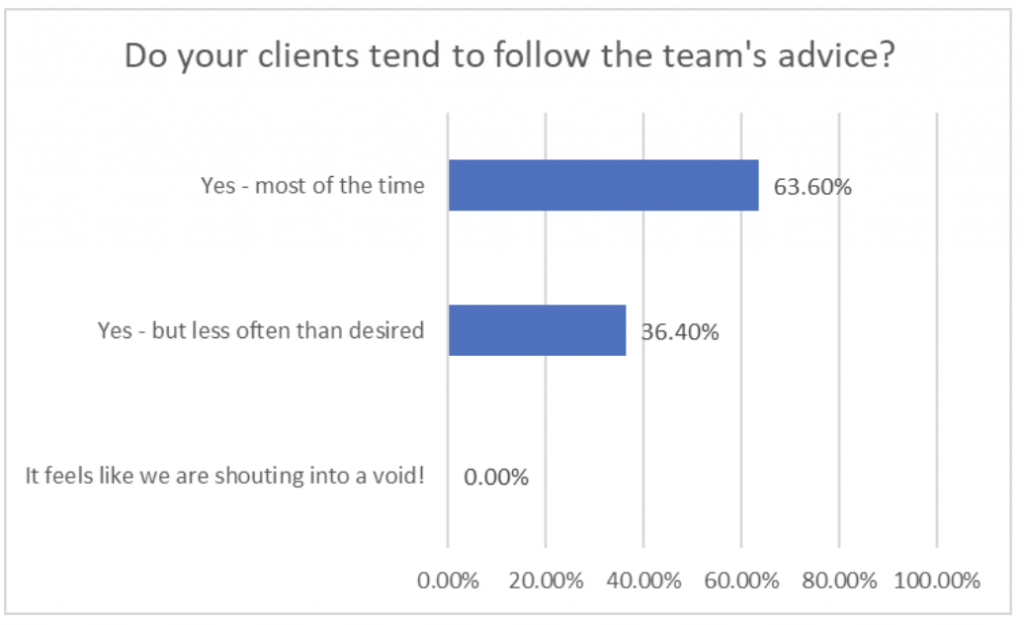The Legalops Café is a growing community hosted by Tabled for legal operations professionals and inhouse counsel looking to network and share insights.
To receive updates and invitations to future LegalOps Cafe sessions please register here.
For November’s session of the Legalops Café, the topic was: “Effective Business Partnering”.
Special thanks to our guest speakers, Gurminder Kaur Nijjar who is Head of General Counsel Business Partnering at Irwin Mitchell and Verity Sparling who is Senior Legal Operations Manager at GWI for kickstarting the discussion by sharing their own experiences and insights.

We kicked off the session by polling the group on two potential indicators of the health of your business partnering efforts, as suggested by our speakers:
These were the results:


These findings confirm there is still plenty of important work to do in this area i.e:
Here are some of the findings, tips and takeaways from the discussion on effective business partnering.
Having roles, teams or projects specifically labelled as ‘Business Partnering’ can provide a quick win in terms of communicating a clear message across the business.
As Gurminder said, quoting Ronseal’s famous adverts: “it works because it does what it says on the tin”.
Resource constraints will mean it isn’t possible (or sensible) to provide an unlimited (or even equal) amount of attention to all stakeholders.
This means you must decide – and be ready to communicate clearly – what the parameters and limitations of your business partnering model will be from Day 1.
This will vary from one organisation to another but, in most cases, a sensible starting point would be to examine the top goals of the business and work from there.
Think about what the legal team can do to support those goals and build your focus list based on which stakeholders have the most direct impact on those goals and/or are in greatest need of that support.
Reviewing those goals and your key stakeholders often helps to ensure attention is always focussed where it will have the most impact.
Where possible, look to partner lawyers with the stakeholders that will provide them with opportunities to do more of what they enjoy or want to learn about.
Effective business partnering is not always about ‘face time’. Ultimately, your goal should be to empower the business to achieve its goals in the most efficient way possible.
At GWI, a young and rapidly growing tech company, sales velocity is key. This means that, sometimes, the best way to partner with the business is to create resources which enable them to self-serve.
Even then, you might stil encounter some degree of trepidation from the Business. However, there are ways to address this e.g:
Training is key to helping stakeholders understand when they should be seeking help from legal and how that input will add value, rather than simply seeing legal as a blocker or source of delay.
Your focus/content will depend on your specific environment. E.g. at GWI, most of their contracts are concluded on their own standard terms. Their training and education therefore focusses on ensuring that stakeholders understand these Ts & Cs.
Similarly, you should demonstrate good business partnership by delivering this training in a way which makes sense for your stakeholders. GWI is a young tech company, with a mostly remote workforce working across multiple timezones. Their legal team will therefore deliver most of it’s training via short, snappy on-demand videos backed up with gamified elements e.g. polls and quizzes.
Another initiative Verity shared, was that they will be backing this up with open ‘drop-in surgeries’ so that stakeholders have an opportunity to seek additional help and provide feedback. This is another example of finding clear and highly visible ways to communicate the message that legal is an accessible and willing partner to the rest of the business.
While ‘effective business partnering’ is clearly a broad topic with lots of moving parts, some key themes did emerge from the discussion, including: i) building relationships; ii) providing resources; and iii) using data to identify priorities and allocate resources.
Tabled helps in-house legal teams to connect and collaborate more closely with their internal clients; offers user-friendly self-service tools such as FAQs, interactive self-service workflows and straightforward document automation. Using the platform also unlocks insights into your legal workflows in order to make data-driven decisions on how to prioritise – and how best to work with – different stakeholders around the business.
If you’d like to discuss anything in this article please get in touch or if you’d like to learn more about our platform, please request a demo below.